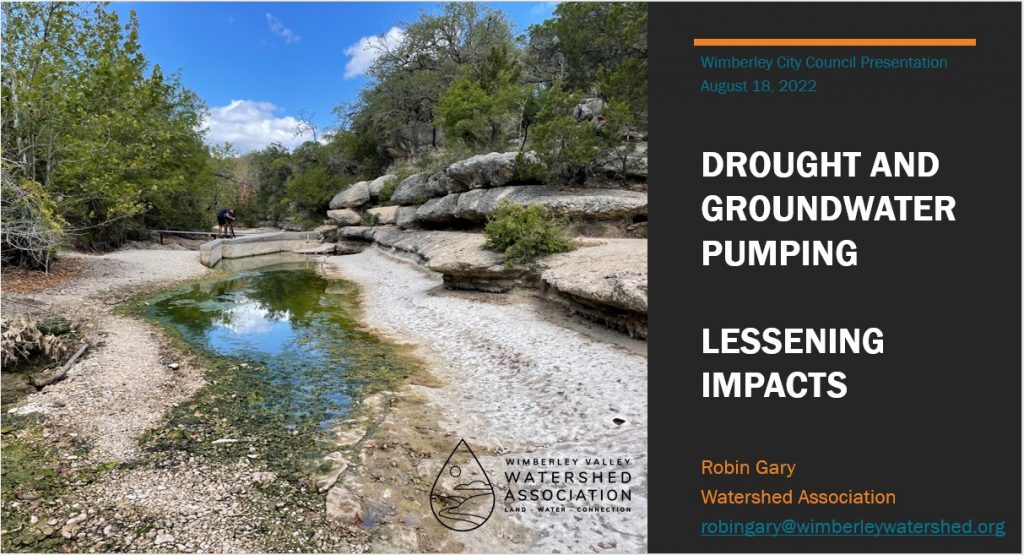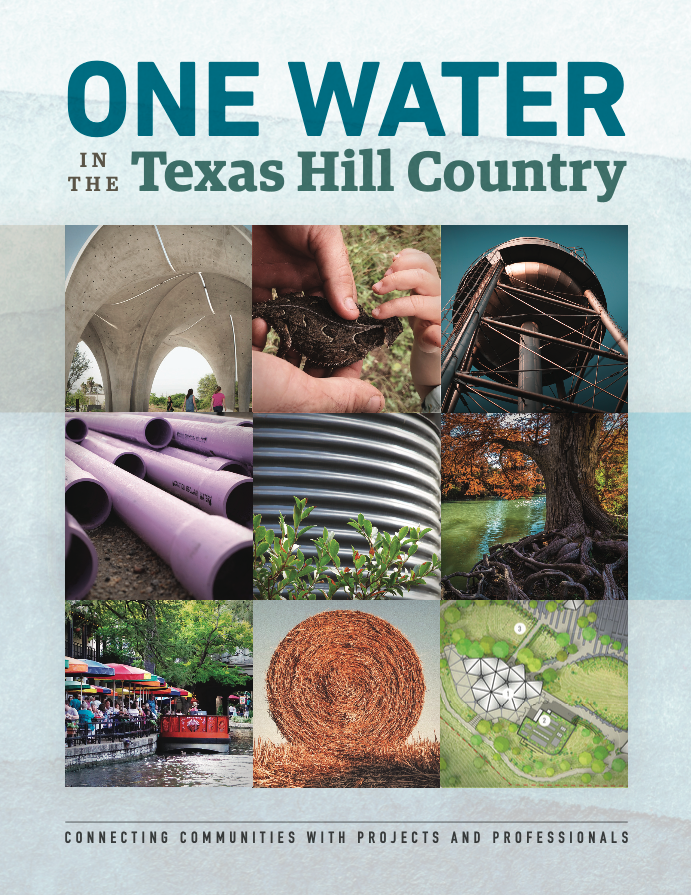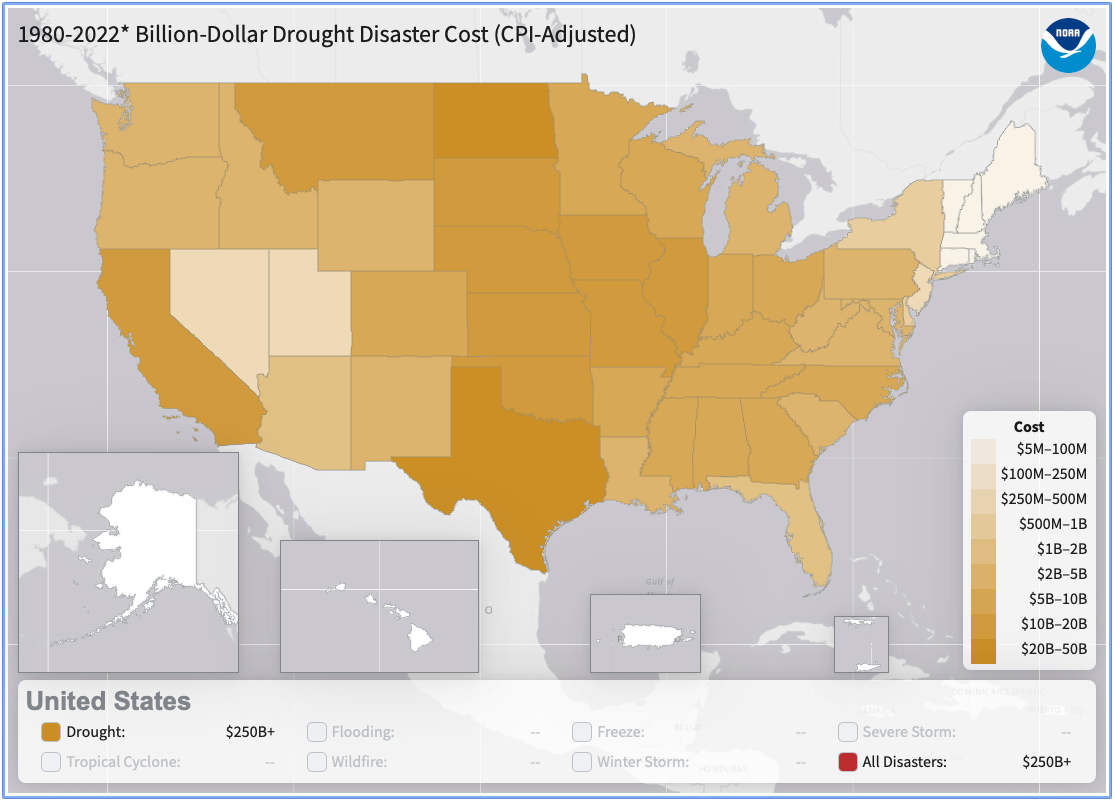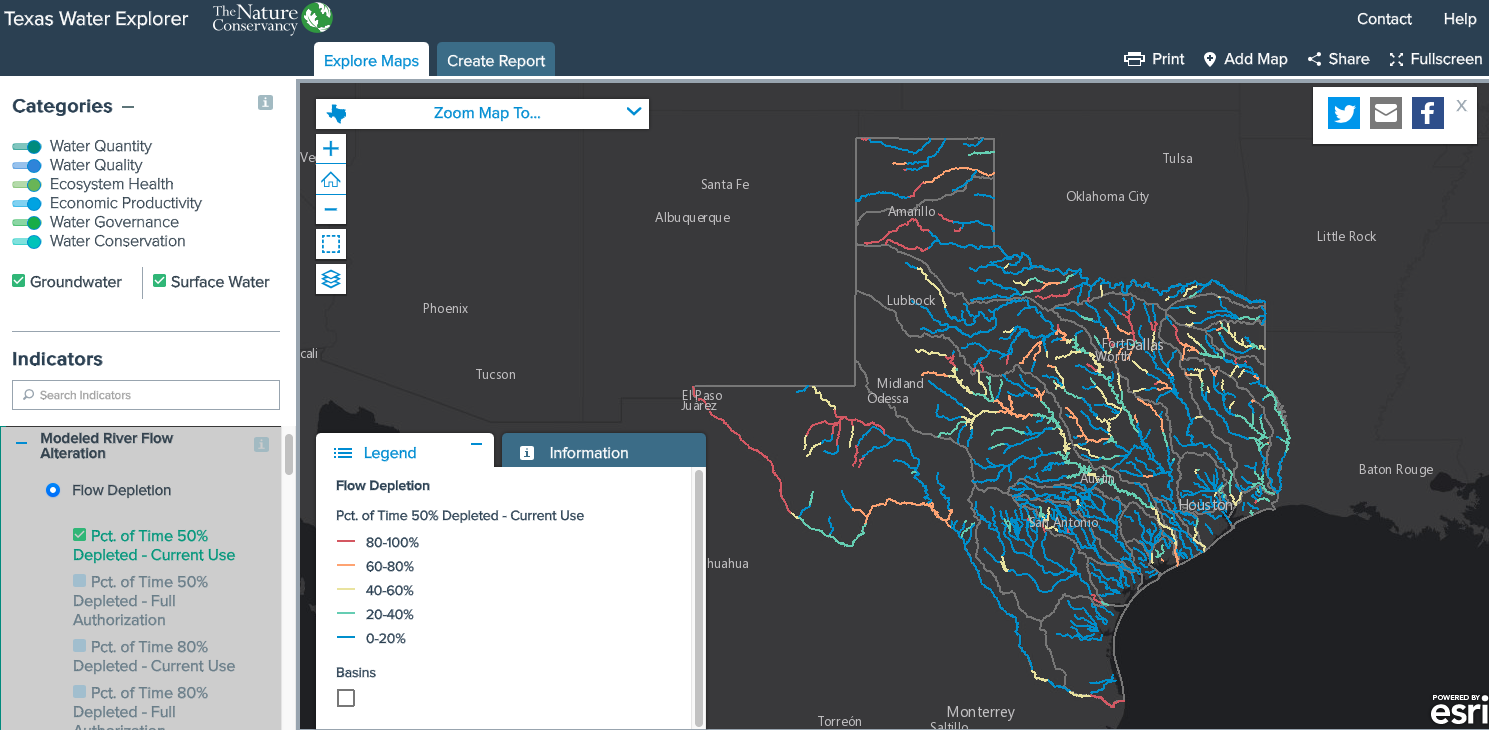Drought
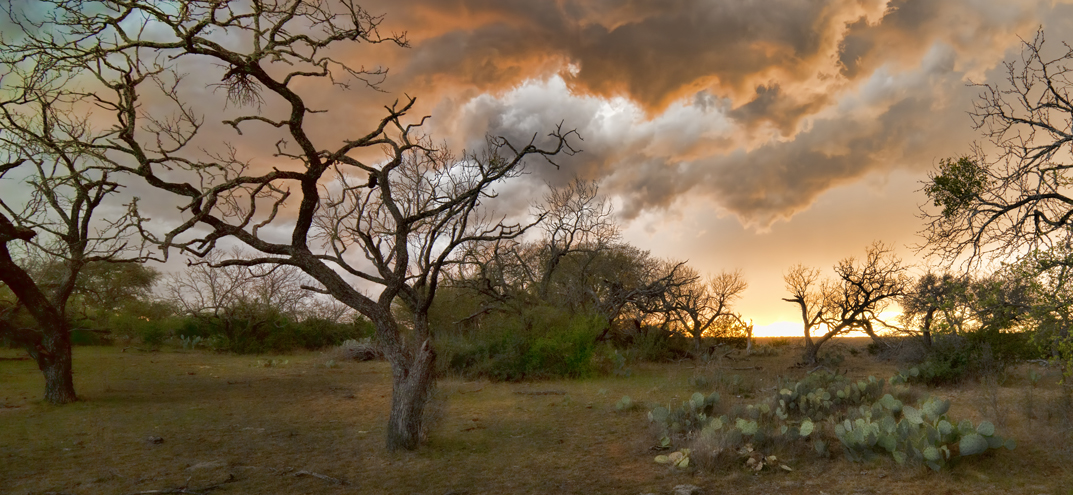
Drought
The Texas Hill Country is currently experiencing record drought conditions. This summer has brought more than 50 days of temperatures over 100 degrees. May, June, and July all set records for being the hottest month recorded – breaking records for each month that were set in 2011.
The Hill Country and all of Central Texas are no stranger to drought and recent droughts have all highlighted the challenges we face in regard to managing our water supply. As a community, we have to pay attention to how we manage our water supply for future generations. Droughts will continue and will be compounded by increased water use, water permitting policy, population growth, climate, land-use and land stewardship practices.
Pressure from our rapidly growing population has substantially increased demand for water, and our location in a climate border region (between drier areas in West Texas and the wetter regions to the East) means that the Hill Country has a naturally variable climate that includes droughts and floods. Rapid growth makes it even more important that we do a good job managing the limited water supply we have – knowing that future droughts will occur.
During a drought, less rainfall is available to bolster supplies and meet human needs. Through water conservation measures, such as limiting outdoor watering, we can reduce demand and preserve existing supplies. This helps to ensure that adequate water is available through the full course of a drought. To maximize success, all water users must participate.
“In the 1950s – our drought of record in Texas – we had about 800,000 people in the Texas Hill Country. Today, that number is closer to 3 million. Inevitably, those folks are are bringing more demand for water resources.”
– Katherine Romans, Executive Director – Hill Country Alliance – August 18, 2022
Find Current Statistics and Readings
You can explore national current conditions here – through the National Drought Information System. Here you will also find additional mapping tools, such as the Palmer Severity Index and the US Drought Monitor.
Current drought conditions are updated daily by region on the Texas Water Development Board website. You can find additional information on drought conditions in Texas from the Texas Commission on Environmental Quality here.
Groundwater Districts across the region are updating restrictions and local water utilities are implementing drought management plans regularly. Locate a current map of Groundwater Conservation Districts across Texas here. You can access additional resources from the Texas Alliance of Groundwater Districts here.
Texas public water utilities are required by law to file drought contingency plans with the Texas Commission on Environmental Quality, which lay out trigger points for reducing demand through restrictions on water use. Groundwater conservation districts (GCDs) address drought management through their district management plans.
Explore Water Resources from HCA and Partners
closed
HCA Issue Paper: Groundwater Supply
 For most of the last century, the Hill Country was sparsely populated. Even after the prolonged drought-of-record (1947-56), which demonstrated the limited nature of Hill Country water supplies, there was still plenty of water to go around. Over the last 20 years, however, our surface water and groundwater resources have come under great pressure from population growth and new development, much of which was poorly planned. In many areas, the hidden cache of water stored in our aquifers, which support the flow of springs and creeks, is being pumped down faster than it can be replenished by rainfall. Some wells are already drying up during hot, dry summers. Residential users are often competing with ranchers’ and farmers’ deeper wells and bigger pumps for the limited resource, and the conflicts show no sign of abating any time soon.
For most of the last century, the Hill Country was sparsely populated. Even after the prolonged drought-of-record (1947-56), which demonstrated the limited nature of Hill Country water supplies, there was still plenty of water to go around. Over the last 20 years, however, our surface water and groundwater resources have come under great pressure from population growth and new development, much of which was poorly planned. In many areas, the hidden cache of water stored in our aquifers, which support the flow of springs and creeks, is being pumped down faster than it can be replenished by rainfall. Some wells are already drying up during hot, dry summers. Residential users are often competing with ranchers’ and farmers’ deeper wells and bigger pumps for the limited resource, and the conflicts show no sign of abating any time soon.
HCA Issue Paper: One Water in the Texas Hill Country
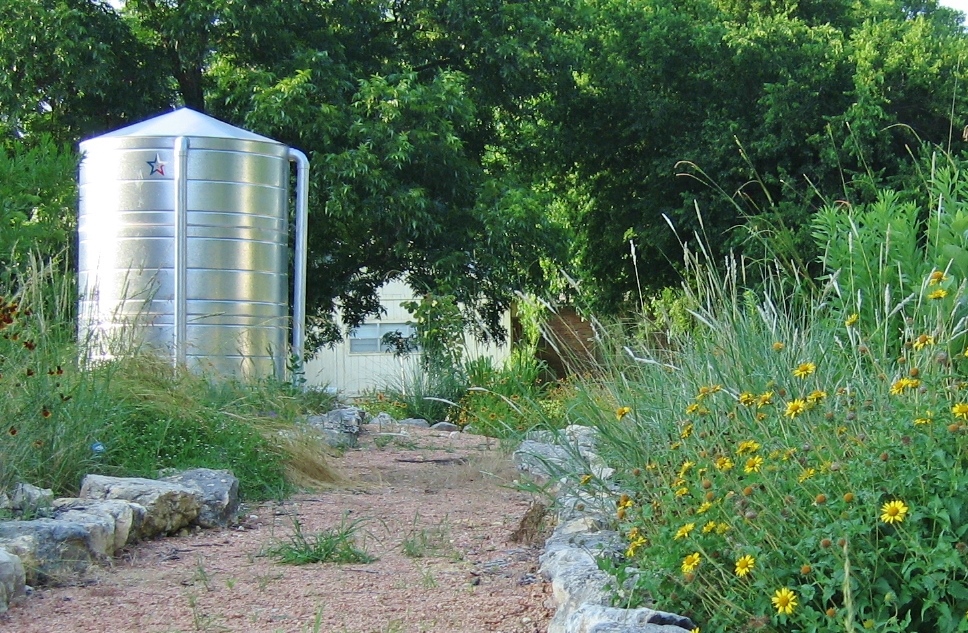 As the Hill Country continues to grow at unprecedented rates, we need to plan ahead for how we will conserve our limited and precious water supplies. But just what tools are available to more efficiently use the water that we already have to protect our natural water systems? “One Water” is defined by the Water Research Foundation as an integrated planning and implementation approach to managing finite water resources for long-term resilience and reliability, meeting both community and ecosystem needs. Simply put, One Water is the consideration of all water resources – including rainwater, drinking water, wastewater, and non-traditional water resources like air-conditioning condensate – as part of the same water system. These resources are used conjunctively – as efficiently and effectively as possible for the benefit of the economy, society, and the environment as possible.
As the Hill Country continues to grow at unprecedented rates, we need to plan ahead for how we will conserve our limited and precious water supplies. But just what tools are available to more efficiently use the water that we already have to protect our natural water systems? “One Water” is defined by the Water Research Foundation as an integrated planning and implementation approach to managing finite water resources for long-term resilience and reliability, meeting both community and ecosystem needs. Simply put, One Water is the consideration of all water resources – including rainwater, drinking water, wastewater, and non-traditional water resources like air-conditioning condensate – as part of the same water system. These resources are used conjunctively – as efficiently and effectively as possible for the benefit of the economy, society, and the environment as possible.
HCA Issue Paper: Surface and Groundwater Policy Integration
 In Texas, water law and regulatory policy treat groundwater differently, and for the most part, separately from surface water. Surface water in its natural beds and banks is owned by the state and is apportioned through a permit system based on priority rights, popularly known as first in time, first in right. Groundwater, by contrast, is considered to be private property owned by the surface landowner. More than 100 years ago the Texas Supreme Court adopted the rule of capture which allows surface landowners to pump as much groundwater as they want from beneath their property with little regard to the effects on neighboring wells or surface water.
In Texas, water law and regulatory policy treat groundwater differently, and for the most part, separately from surface water. Surface water in its natural beds and banks is owned by the state and is apportioned through a permit system based on priority rights, popularly known as first in time, first in right. Groundwater, by contrast, is considered to be private property owned by the surface landowner. More than 100 years ago the Texas Supreme Court adopted the rule of capture which allows surface landowners to pump as much groundwater as they want from beneath their property with little regard to the effects on neighboring wells or surface water.
HCA Issue Paper: Rainwater Harvest
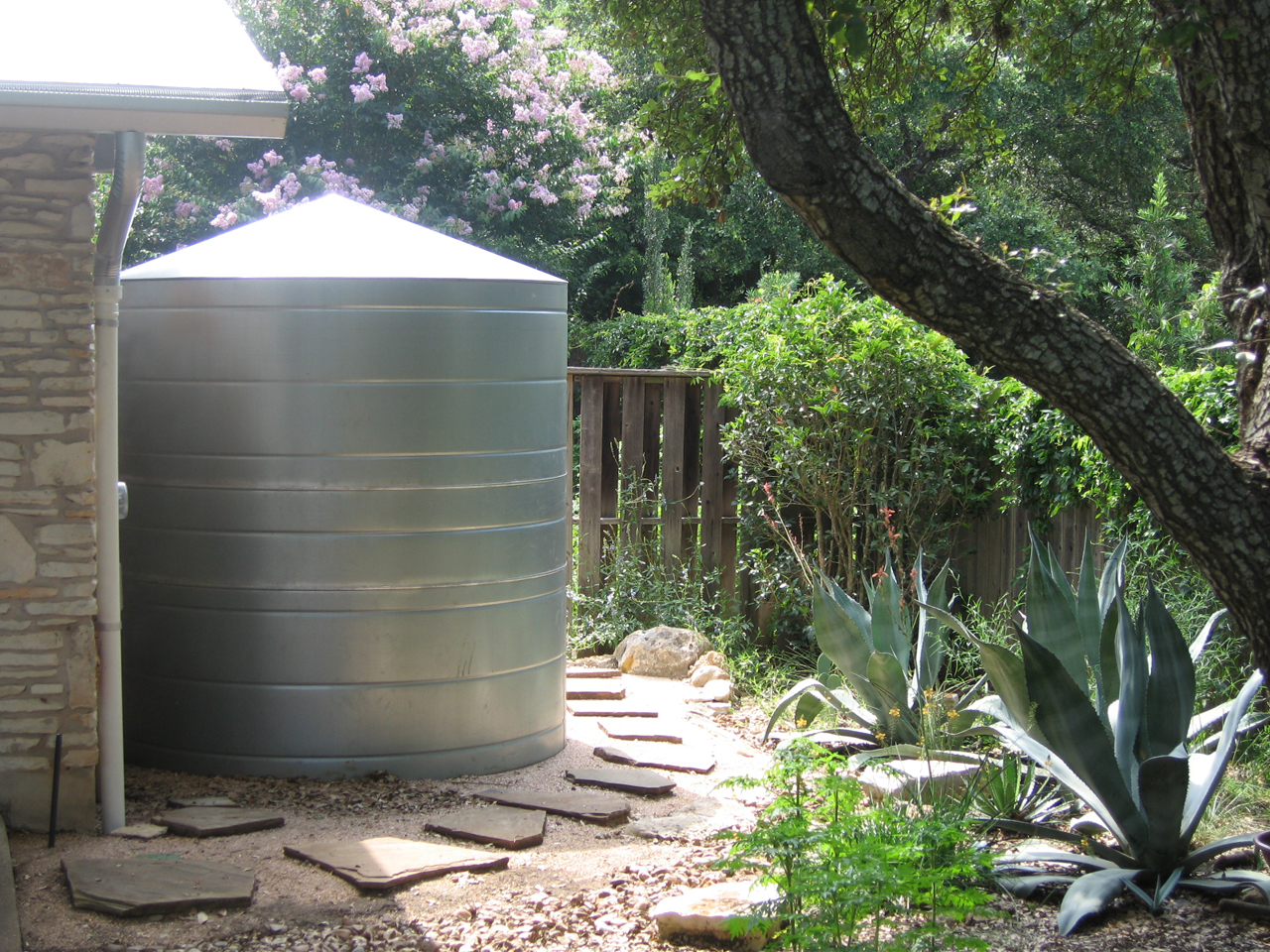 Rainwater harvesting is not a new invention; it can be traced back thousands of years. As the recent concepts of sustainability, smart growth, and responsible development become more widely known, more and more people are returning to the practice of capturing and using the rain that falls on rooftops for all or part of their water supply. Over the next 50 years the population of Texas is expected to double. Already, there are places in Texas that are experiencing water shortages because demand is outpacing supply. In the Texas Hill Country, many people are choosing rainwater over groundwater not only for its ease and availability, but also for its taste, purity, and reduced cost.
Rainwater harvesting is not a new invention; it can be traced back thousands of years. As the recent concepts of sustainability, smart growth, and responsible development become more widely known, more and more people are returning to the practice of capturing and using the rain that falls on rooftops for all or part of their water supply. Over the next 50 years the population of Texas is expected to double. Already, there are places in Texas that are experiencing water shortages because demand is outpacing supply. In the Texas Hill Country, many people are choosing rainwater over groundwater not only for its ease and availability, but also for its taste, purity, and reduced cost.
2011 Drought
Explore resources created in light of the 2011 drought:
- Learn about Drought in the Hill Country, presentation created by Raymond Slade, Chair HCA Technical Advisory Committee
- Read Raymond Slade’s Presentation on Current and Future Water Shortages
- Staggering photographs of 2011 Drought from Texas Parks and Wildlife
Recent Drought News
Hill Country rivers at risk of historic lows ahead of tubing season
"In general, the Edwards Aquifer and San Marcos springflow levels are currently at levels that have only been experienced less than 10% of the time in recorded monitoring history and approaching the lowest levels on record for this time of year," Enders said in an...
Hill Country leaders gather for a meeting on water challenges and One Water solutions
On Wednesday, November 13, city leaders and staff from across 15 cities in Central Texas gathered for the second “One Water in the Hill Country” meeting, co-hosted by Hill Country Alliance (HCA) and the City of Boerne. This annual event provides the opportunity for...
Trinity Edwards Springs Protection Association gets OK to intervene in groundwater suit
A federal court granted the Trinity Edwards Springs Protection Association’s (TESPA) motion to intervene in an ongoing lawsuit between Aqua Texas and the Hays Trinity Groundwater Conservation District (HTGCD). Aqua Texas filed the lawsuit in December 2023 against...
San Antonio enters Stage 3 watering rules for the first time ever — here’s what it means
The San Antonio Water System officially entered Stage 3 watering restrictions for the first time in the utility’s 30-year history on Tuesday. Under the new watering rules ordinance, which was approved by the City Council last week, all SAWS customers — including those...

